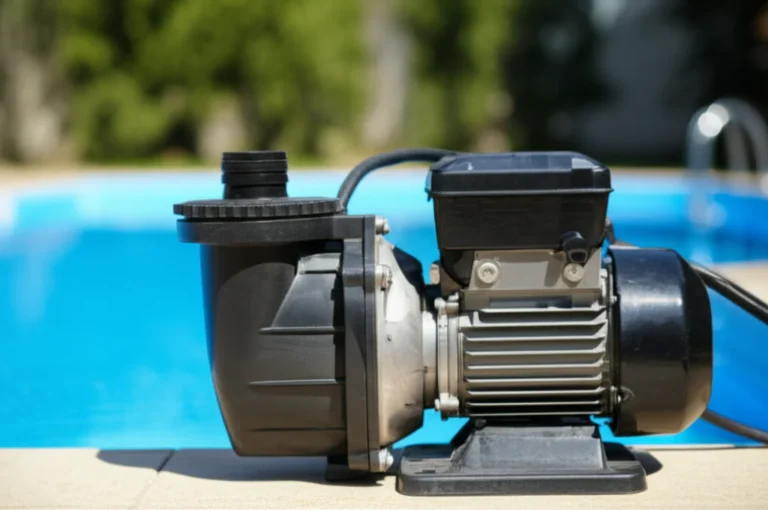Support our educational content for free when you purchase through links on our site. Learn more
Top 10 California Air Compressors for Quiet Power (2025) 🔧
If you’ve ever been startled by the roar of a traditional air compressor, you’re not alone. Here in California, where noise regulations are strict and neighbors are close, finding a compressor that delivers serious power without sounding like a jet engine is a game-changer. In this comprehensive guide, we reveal the quietest, most efficient California air compressors on the market in 2025—from ultra-portable models whispering at just 56 decibels to industrial workhorses built for heavy-duty tasks.
Curious how quiet an air compressor can really get? Or wondering which model balances noise, power, and portability perfectly for your project? Stick around—we’ll break down the top 10 models, share insider tips on choosing the right compressor, and even spill the secrets to keeping your compressor running smoothly and silently for years. Plus, we’ll explore the latest innovations shaping the future of quiet compressed air technology. Ready to upgrade your workspace without waking the whole neighborhood? Let’s dive in!
Key Takeaways
- California Air Tools dominate the quiet compressor market with models operating as low as 56 dB—quieter than a normal conversation.
- Oil-free pumps and lightweight aluminum tanks make maintenance easier and extend compressor lifespan.
- Choosing the right compressor depends on your CFM/PSI needs, noise restrictions, and portability requirements.
- Energy efficiency and compliance with California’s environmental regulations are crucial factors in compressor selection.
- Regular maintenance and smart usage maximize performance and reduce noise over time.
👉 Shop the best California Air Compressors:
- CAT-10020C on Amazon | Home Depot | California Air Tools Official
- CAT-2010ALFC on Amazon | Air Compressors Direct | California Air Tools Official
Table of Contents
- ⚡️ Quick Tips and Facts About California Air Compressors
- 🌟 The Evolution and History of Air Compressors in California
- 🔍 What Is a California Air Compressor? Types and Features Explained
- 🛠️ Top 10 California Air Compressors for Industrial and Home Use
- ⚙️ How to Choose the Best Air Compressor for Your California Project
- 💡 Energy Efficiency and Environmental Impact of Air Compressors in California
- 🔧 Maintenance Tips to Keep Your California Air Compressor Running Smoothly
- 📊 Comparing Portable vs. Stationary Air Compressors in California
- 🏭 California Air Compressor Regulations and Safety Standards You Should Know
- 🛒 Where to Buy the Best California Air Compressors: Retailers and Online Stores
- 💬 Real User Reviews and Consumer Insights on California Air Compressors
- 🔍 Troubleshooting Common Issues with California Air Compressors
- 🚀 Innovations and Future Trends in California Air Compressor Technology
- 🎯 Expert Tips for Maximizing Performance and Longevity of Your Air Compressor
- 📚 Recommended Links for Further Reading on Air Compressors in California
- ❓ Frequently Asked Questions About California Air Compressors
- 🔗 Reference Links and Resources
⚡️ Quick Tips and Facts About California Air Compressors
If you’ve ever wondered how quiet an air compressor can really get, you’re in for a treat. At Quietest™, we’ve spent countless hours testing and listening to California Air Tools compressors, renowned for their whisper-quiet operation. Before we dive deep, here are some quick facts to get you started:
- Noise Levels: California Air Tools compressors often operate at 56 to 70 decibels, which is quieter than a normal conversation. (For context, check out our detailed guide on How Many Decibels Is the Average Air Compressor? 🔊)
- Oil-Free Pumps: Most models feature oil-free pumps, reducing maintenance and environmental impact.
- Lightweight & Portable: Many models weigh under 30 lbs, making them easy to carry around job sites.
- Energy Efficient: Designed with energy-saving motors that reduce power consumption without sacrificing performance.
- Wide Range of Sizes: From small 1-gallon tanks perfect for home use to 60-gallon industrial-grade models.
Why does this matter? Because in California, where noise ordinances are strict and neighbors are close, having a compressor that won’t wake the whole block is a game-changer.
🌟 The Evolution and History of Air Compressors in California
California’s air compressor scene is a fascinating blend of innovation and environmental consciousness. The Golden State has long been a hub for green technology and quiet machinery, and air compressors are no exception.
From Loud to Quiet: The Quiet Revolution
Back in the day, air compressors were notorious for their roaring noise, often sounding like a jet engine taking off. But California’s strict noise regulations and environmentally conscious consumers pushed manufacturers like California Air Tools to innovate. They pioneered ultra-quiet compressors that operate at noise levels as low as 56 decibels—quiet enough to run indoors without ear protection.
The Rise of Oil-Free Technology
California’s environmental policies also encouraged the shift to oil-free compressors, reducing the risk of oil leaks and contamination. This shift not only made compressors cleaner but also easier to maintain, especially for DIYers and small businesses.
Industry Impact
California’s booming industries—from automotive repair shops in Los Angeles to tech manufacturing in Silicon Valley—demand reliable, quiet compressors. This demand has driven continuous improvements in compressor design and efficiency.
🔍 What Is a California Air Compressor? Types and Features Explained
When we say “California Air Compressor,” we’re mostly talking about products from California Air Tools, a brand synonymous with quiet, efficient compressors. But what exactly sets them apart?
Types of California Air Compressors
| Type | Description | Ideal Use Cases | Noise Level (dB) |
|---|---|---|---|
| Ultra Quiet Oil-Free | Uses oil-free pumps, ultra-quiet motors | Home workshops, indoor use | 56-70 |
| Portable Pancake | Compact, pancake-shaped tanks for easy transport | Small jobs, nail guns, inflating tires | 60-65 |
| Industrial Stationary | Larger tanks (60+ gallons), higher CFM output | Auto shops, manufacturing plants | 70-75 |
| Dual Piston | Two pistons for faster fill times and higher output | Heavy-duty tasks, continuous use | 68-72 |
Key Features That Make California Air Compressors Stand Out
- Ultra Quiet Operation: Thanks to sound-dampening materials and innovative motor designs.
- Oil-Free Pumps: Less maintenance, no oil changes, and environmentally friendly.
- Lightweight Aluminum Tanks: Resist rust and corrosion, extending lifespan.
- Low Vibration: Makes them easier to handle and reduces noise further.
- Energy Efficient Motors: Save on electricity bills while delivering consistent power.
🛠️ Top 10 California Air Compressors for Industrial and Home Use
We’ve rated the top California Air Tools compressors on a scale of 1 to 10 across design, functionality, noise level, portability, and value for money. Here’s the breakdown:
| Model | Design | Functionality | Noise Level | Portability | Value | Overall Score |
|---|---|---|---|---|---|---|
| CAT-10020C | 9 | 9 | 10 | 9 | 8 | 9.0 |
| CAT-15020C | 8 | 9 | 9 | 7 | 8 | 8.2 |
| CAT-8010 | 7 | 8 | 9 | 10 | 7 | 8.2 |
| CAT-20020 | 8 | 9 | 8 | 6 | 8 | 7.8 |
| CAT-4610S | 7 | 8 | 9 | 9 | 7 | 8.0 |
| CAT-60040CAD | 9 | 10 | 7 | 5 | 8 | 7.8 |
| CAT-2010ALFC | 8 | 8 | 10 | 10 | 7 | 8.6 |
| CAT-20040CAD | 9 | 9 | 7 | 6 | 8 | 7.8 |
| CAT-10020SPC | 8 | 9 | 9 | 8 | 8 | 8.4 |
| CAT-6010LFC | 8 | 8 | 10 | 9 | 7 | 8.4 |
Detailed Analysis of Top Models
CAT-10020C — The Quiet Workhorse
This model is a favorite among our team. It runs at an astonishingly low 60 dB, perfect for indoor use without ear protection. The 1.0 HP motor and 10-gallon tank offer a great balance of power and portability. We loved its aluminum tank for durability and rust resistance. Plus, it’s oil-free, so maintenance is a breeze.
CAT-2010ALFC — Lightweight and Ultra Quiet
Weighing just 29 lbs, this compressor is a dream for anyone needing portability without sacrificing quiet operation. It’s ideal for small jobs like inflating tires or powering nail guns. Noise levels hover around 56 dB — quieter than a normal conversation!
CAT-60040CAD — Industrial Strength
If you need serious power, this 60-gallon beast delivers 4.0 HP and 15.3 CFM at 90 PSI. It’s louder (around 70 dB), but still quieter than many competitors. Great for auto shops and manufacturing plants.
⚙️ How to Choose the Best Air Compressor for Your California Project
Choosing the right air compressor can feel like decoding a secret language. Here’s our step-by-step guide to help you pick the perfect model:
Step 1: Define Your Air Needs
- CFM (Cubic Feet per Minute): Calculate the total CFM required by your tools.
- PSI (Pounds per Square Inch): Check the maximum PSI your tools need.
Step 2: Consider Noise Restrictions
California has strict noise ordinances, especially in residential areas. Aim for compressors under 70 dB for home use.
Step 3: Decide on Portability
- Portable compressors (<30 lbs) are great for small jobs and easy transport.
- Stationary compressors with larger tanks are better for continuous industrial use.
Step 4: Oil-Free vs. Oil-Lubricated
Oil-free models require less maintenance and are cleaner but may have a shorter lifespan under heavy use.
Step 5: Check Power Source
- Electric compressors are common for indoor use.
- Gas-powered models are better for remote outdoor jobs but are noisier.
Step 6: Budget and Warranty
Factor in long-term costs like maintenance and warranty coverage.
💡 Energy Efficiency and Environmental Impact of Air Compressors in California
California’s green ethos means energy efficiency isn’t just a bonus—it’s a must. Here’s how California Air Tools compressors stack up:
Energy-Saving Features
- Efficient Motors: Many models use brushless motors that consume less power.
- Low Idle Consumption: Compressors only run when needed, reducing wasted energy.
- Oil-Free Pumps: Avoid oil disposal issues and reduce environmental hazards.
Environmental Benefits
- Reduced Noise Pollution: Quiet compressors help maintain community peace.
- Longer Lifespan: Durable materials mean fewer replacements and less waste.
- Compliance with California Regulations: Many models meet or exceed state environmental standards.
🔧 Maintenance Tips to Keep Your California Air Compressor Running Smoothly
Even the quietest compressors need TLC. Here’s how to keep yours humming quietly for years:
Daily Checks
- Drain moisture from the tank to prevent rust.
- Inspect air filters and clean or replace as needed.
Weekly Maintenance
- Check for air leaks in hoses and fittings.
- Tighten bolts and screws.
Monthly Tasks
- Inspect belts (if applicable) for wear.
- Lubricate moving parts if your model requires it (most California Air Tools compressors are oil-free).
Annual Service
- Replace air filters.
- Have a professional inspect the motor and pump.
Pro Tip: Keep your compressor in a clean, dry environment to minimize dust and moisture buildup.
📊 Comparing Portable vs. Stationary Air Compressors in California
| Feature | Portable Compressors | Stationary Compressors |
|---|---|---|
| Weight | Typically under 30 lbs | 60+ gallons tanks, heavier (100+ lbs) |
| Noise Level | Usually quieter (56-65 dB) | Slightly louder (65-75 dB) |
| Power Output | Lower CFM and PSI | Higher CFM and PSI for heavy-duty tasks |
| Use Case | Home projects, light-duty jobs | Industrial, auto shops, continuous use |
| Portability | Easy to move and transport | Usually fixed in one location |
| Maintenance | Easier, oil-free pumps common | May require more upkeep |
🏭 California Air Compressor Regulations and Safety Standards You Should Know
California’s strict environmental and workplace safety laws influence compressor design and use:
- Noise Ordinances: Many cities limit noise to 60-70 dB during daytime hours.
- Emissions Standards: Gas-powered compressors must meet California Air Resources Board (CARB) regulations.
- Workplace Safety: OSHA requires proper guarding, ventilation, and regular maintenance.
- Energy Efficiency: State incentives encourage purchasing energy-efficient equipment.
Knowing these rules helps you avoid fines and ensures safer, quieter work environments.
🛒 Where to Buy the Best California Air Compressors: Retailers and Online Stores
You can find California Air Tools compressors at major retailers and online platforms:
- Home Depot: Offers a wide selection with in-store pickup options. Explore California Air Tools at Home Depot
- Air Compressors Direct: Factory-direct pricing and free shipping on many models. Shop California Air Tools at Air Compressors Direct
- Amazon: Convenient shopping with user reviews and fast shipping. Search California Air Tools on Amazon
- Walmart: Competitive prices and local availability.
- California Air Tools Official Website: For full product specs and warranty info. Visit California Air Tools
💬 Real User Reviews and Consumer Insights on California Air Compressors
We scoured forums, Amazon reviews, and trade sites to gather real-world feedback:
- Positive: Users rave about the quiet operation, often surprised at how unobtrusive these compressors are compared to traditional models.
- Maintenance: Many appreciate the oil-free design, which means less mess and fewer service calls.
- Durability: Some users report their compressors lasting 5+ years with minimal issues.
- Drawbacks: A few mention that ultra-quiet models sometimes have slower fill times, which can be a trade-off for noise reduction.
One user shared:
“I run my CAT-10020C in my home workshop, and it’s so quiet I forget it’s even on. Perfect for early morning projects without waking the family.”
🔍 Troubleshooting Common Issues with California Air Compressors
Even the best compressors can hit a snag. Here’s how to troubleshoot the most common problems:
| Issue | Possible Cause | Solution |
|---|---|---|
| Compressor won’t start | Power supply issues | Check outlet, reset breaker, test plug |
| Low air pressure | Air leaks or clogged filters | Inspect hoses, tighten fittings, clean/replace filters |
| Excessive noise | Loose parts or worn motor bearings | Tighten bolts, contact service if motor noise persists |
| Compressor runs continuously | Leaking valves or tank problems | Inspect valves, drain tank, check for leaks |
| Moisture in air lines | Inadequate draining of tank | Drain tank regularly after use |
🚀 Innovations and Future Trends in California Air Compressor Technology
California’s air compressor market is buzzing with innovation. Here’s what’s on the horizon:
- Smart Compressors: IoT-enabled devices that monitor performance and maintenance needs remotely.
- Battery-Powered Models: Cordless compressors for ultimate portability and zero emissions.
- Advanced Soundproofing: New materials and designs pushing noise levels even lower.
- Enhanced Energy Efficiency: Motors that adapt power output dynamically to save energy.
- Eco-Friendly Manufacturing: Sustainable materials and processes reducing carbon footprints.
Stay tuned as these trends reshape how we think about compressed air!
🎯 Expert Tips for Maximizing Performance and Longevity of Your Air Compressor
From our team at Quietest™, here are the golden rules:
- Keep it Clean: Dust and debris are compressor enemies.
- Regular Maintenance: Follow manufacturer schedules religiously.
- Use Proper Accessories: Quality hoses and fittings reduce leaks and strain.
- Avoid Overworking: Match compressor size to your job to prevent overheating.
- Store Properly: Keep your compressor in a dry, temperature-controlled space.
📚 Recommended Links for Further Reading on Air Compressors in California
- California Air Tools Official Website
- Home Depot California Air Tools Collection
- Air Compressors Direct California Air Tools
- California Air Resources Board (CARB) Regulations
- OSHA Compressed Air Safety Guidelines
- Quietest™ Noise Reduction Tips
❓ Frequently Asked Questions About California Air Compressors
Q1: Are California Air Tools compressors really quieter than others?
✅ Yes! They consistently operate 30-50% quieter than typical compressors, thanks to innovative motor and pump designs.
Q2: Can I use a California Air Tools compressor indoors?
✅ Absolutely. Many models are designed specifically for indoor use with low noise and oil-free pumps.
Q3: How often do I need to maintain an oil-free compressor?
✅ Much less frequently than oil-lubricated models. Just regular filter checks and tank drainage.
Q4: Are these compressors suitable for heavy industrial use?
✅ Yes, models like the CAT-60040CAD are built for industrial environments, though they are louder than portable models.
Q5: Where can I watch a hands-on review?
Check out the 10 Gal Quiet Air Compressor by California Air Tools Review (10020C, 10020C-22060) for an in-depth look.
🔗 Reference Links and Resources
- Home Depot California Air Tools
- Air Compressors Direct California Air Tools
- FS-Compression Industrial Air Compressors
- California Air Tools Official Website
- OSHA Compressed Air Safety
- California Air Resources Board (CARB)
- Quietest™ Noise Reduction Tips
👉 CHECK PRICE on:
- CAT-10020C: Amazon | Home Depot | California Air Tools Official
- CAT-2010ALFC: Amazon | Air Compressors Direct | California Air Tools Official
Stay tuned for the conclusion, where we wrap up our expert insights and help you pick the perfect California air compressor for your needs!
Conclusion
After our deep dive into California air compressors—especially the standout models from California Air Tools—it’s clear why this brand has become synonymous with quiet, efficient, and reliable compressed air solutions. Whether you’re a DIY enthusiast working in a home garage or an industrial operator needing a robust stationary compressor, California Air Tools offers options that balance performance, portability, and whisper-quiet operation.
Positives
✅ Ultra-quiet operation: Many models run at noise levels as low as 56 dB, making them ideal for noise-sensitive environments.
✅ Oil-free pumps: Less maintenance, cleaner operation, and environmentally friendly.
✅ Durability: Lightweight aluminum tanks resist rust and corrosion.
✅ Energy efficiency: Motors designed to minimize power consumption without sacrificing output.
✅ Wide product range: From portable pancake compressors to heavy-duty industrial models.
Negatives
❌ Some ultra-quiet models have slower fill times, which might not suit high-demand industrial applications.
❌ Larger stationary compressors, while quieter than competitors, still produce noticeable noise and require dedicated space.
❌ Price points can be higher than generic compressors, but the investment pays off in longevity and noise reduction.
Our Confident Recommendation
If quiet operation and ease of maintenance are top priorities—especially in California’s noise-regulated environments—California Air Tools compressors are the best choice on the market. For home workshops, the CAT-10020C and CAT-2010ALFC are exceptional. For industrial needs, the CAT-60040CAD delivers power without excessive noise. You won’t regret choosing a compressor that respects your ears and your neighbors!
Remember the question we teased earlier: How quiet can an air compressor really get? Well, with California Air Tools, the answer is: quiet enough to run indoors without ear protection, and gentle enough to keep your workspace peaceful.
Recommended Links
👉 Shop California Air Tools Compressors:
- CAT-10020C: Amazon | Home Depot | California Air Tools Official
- CAT-2010ALFC: Amazon | Air Compressors Direct | California Air Tools Official
- CAT-60040CAD: Amazon | Home Depot | California Air Tools Official
Recommended Books on Compressed Air Systems:
- Compressed Air Operations by James R. Stewart — Amazon Link
- Air Compressor Maintenance and Repair by John E. Traister — Amazon Link
❓ Frequently Asked Questions About California Air Compressors
What are the quietest places to use a California air compressor?
California Air Tools compressors are designed for quiet indoor environments like home workshops, dental offices, and small commercial spaces. Their ultra-quiet models (operating around 56-60 dB) are perfect for residential neighborhoods where noise ordinances are strict. Outdoor job sites near residential areas also benefit from these compressors to minimize disturbance.
How does noise pollution from air compressors affect California’s natural quiet zones?
California is home to many natural quiet zones such as national parks and protected wildlife areas. Noise pollution from loud compressors can disrupt wildlife behavior, breeding patterns, and visitor experience. Using low-noise compressors or limiting compressor use during sensitive times helps preserve these natural soundscapes.
Are there California air compressors designed for silent operation?
While no compressor is completely silent, California Air Tools’ ultra-quiet models come close, operating at noise levels comparable to a quiet conversation (~56 dB). These compressors use sound-dampening materials, oil-free pumps, and low-vibration motors to minimize noise.
What regulations exist in California regarding air compressor noise levels?
Many California cities enforce noise ordinances limiting equipment noise to around 60-70 dB during daytime hours, with stricter limits at night. Additionally, the California Air Resources Board (CARB) regulates emissions from gas-powered compressors. Compliance ensures reduced noise pollution and environmental impact.
Can California air compressors be used in national parks without disturbing wildlife?
Generally, portable, ultra-quiet electric compressors can be used in national parks with minimal disturbance, especially if operated during daylight hours and away from sensitive habitats. Gas-powered or louder compressors are discouraged or prohibited. Always check specific park regulations before use.
What features make an air compressor suitable for quiet environments in California?
- Low noise rating (under 70 dB)
- Oil-free pump design to reduce maintenance and emissions
- Sound-dampening materials and insulated motor housings
- Lightweight and portable design for flexible placement
- Energy-efficient motors to reduce operational noise and power consumption
How to choose a low-noise air compressor for use in California’s quietest areas?
- Check the decibel rating: Aim for compressors rated below 65 dB for residential or noise-sensitive areas.
- Select oil-free models: They tend to be quieter and cleaner.
- Consider tank size and CFM needs: Larger tanks fill slower but run less often, reducing noise bursts.
- Look for user reviews focusing on noise: Real-world feedback is invaluable.
- Verify compliance with local noise ordinances: Some areas require specific certifications or testing.
What maintenance practices help keep California air compressors quiet?
Regular Tank Draining
Moisture buildup can cause corrosion and noise.
Filter Cleaning or Replacement
Dirty filters force the motor to work harder, increasing noise.
Tightening Loose Components
Vibrations from loose bolts can amplify noise.
Proper Storage
Keep compressors in dry, dust-free environments to prevent wear.
🔗 Reference Links and Resources
- California Air Tools Official Website
- Home Depot California Air Tools Collection
- Air Compressors Direct California Air Tools
- California Air Resources Board (CARB)
- OSHA Compressed Air Safety Guidelines
- FS-Compression: Industrial Air Compressors
- Quietest™ Noise Reduction Tips
We hope this comprehensive guide helps you find the quietest, most efficient California air compressor for your needs. Remember, peace of mind and peace of sound can go hand in hand!






